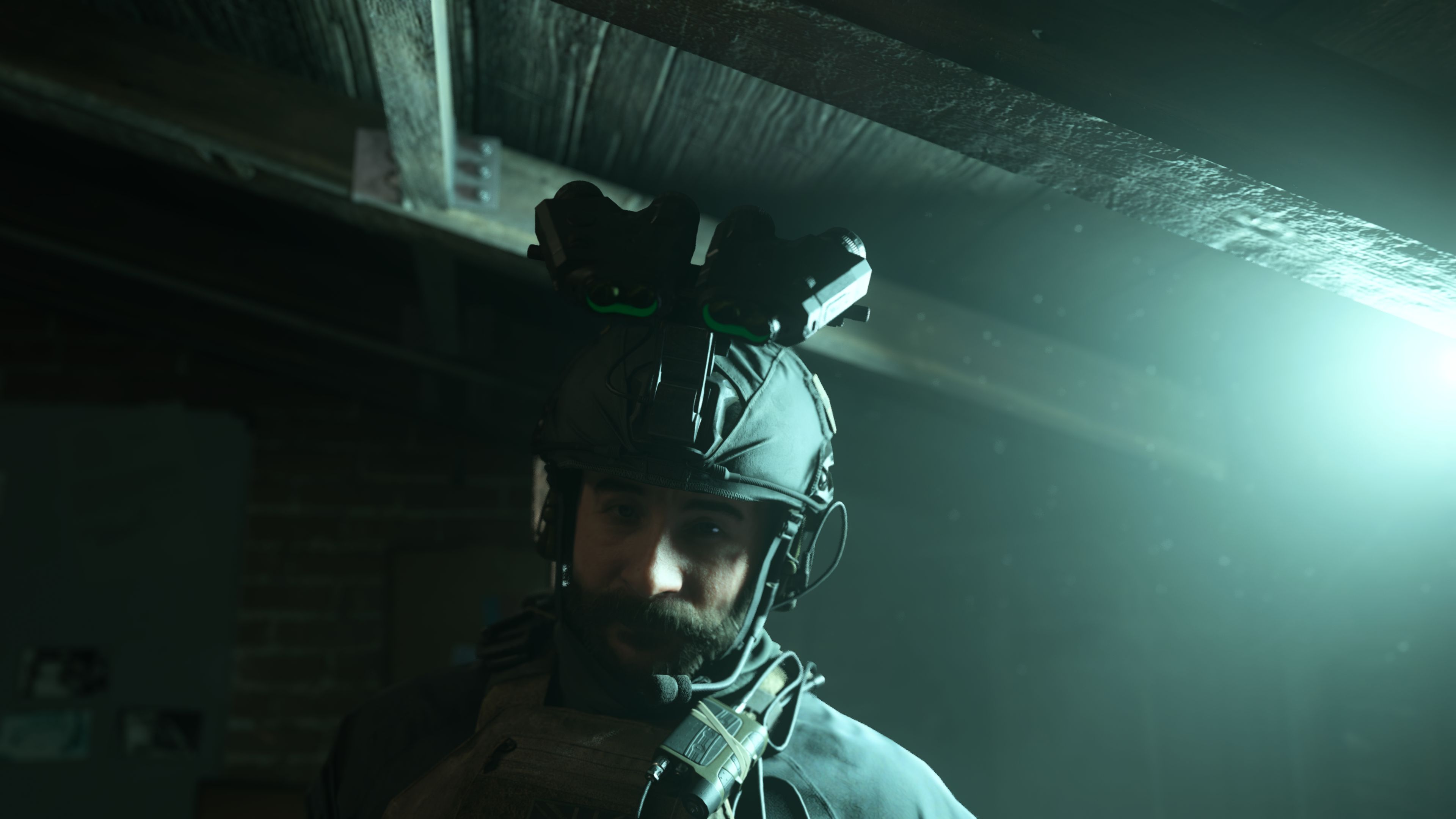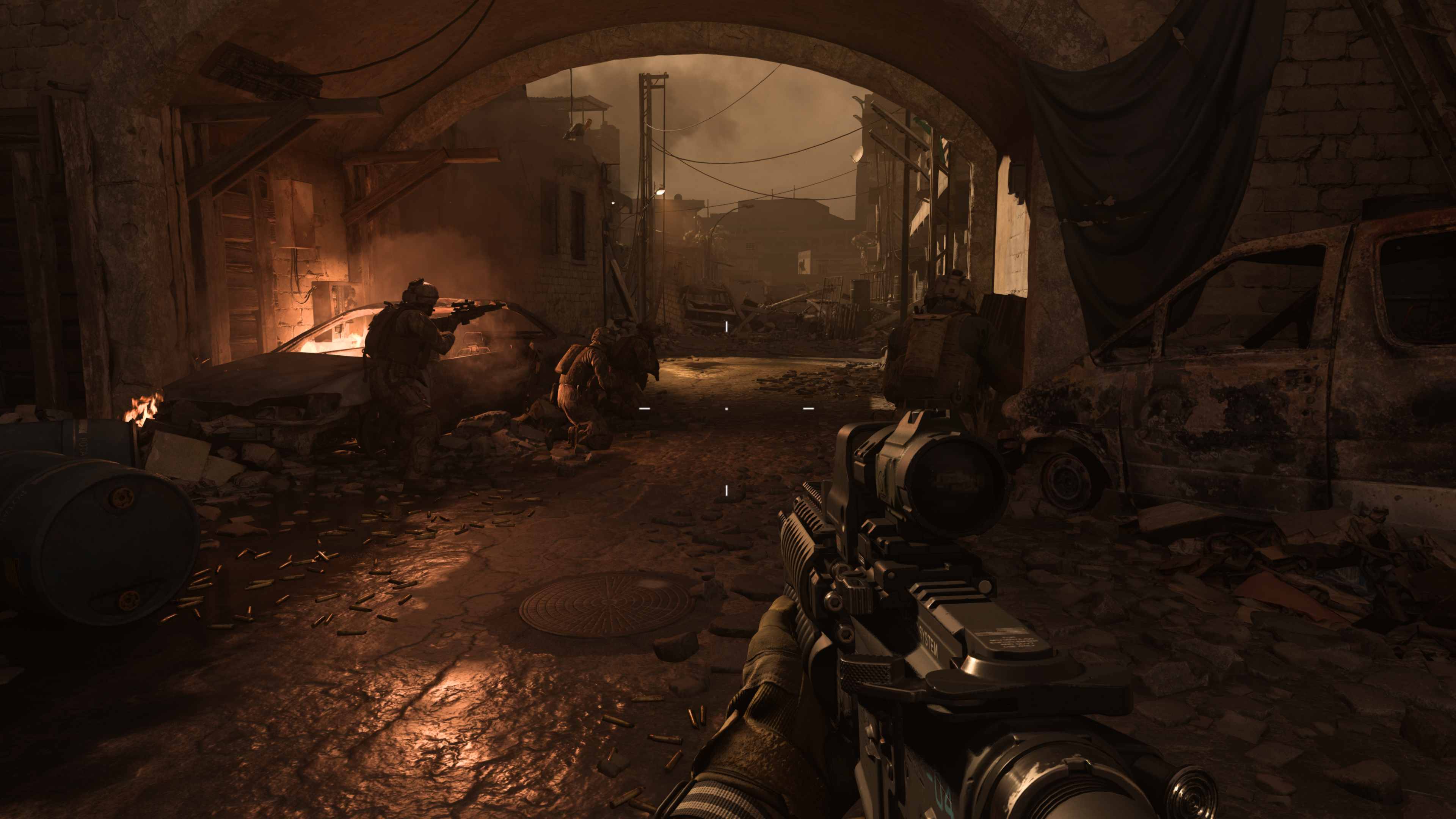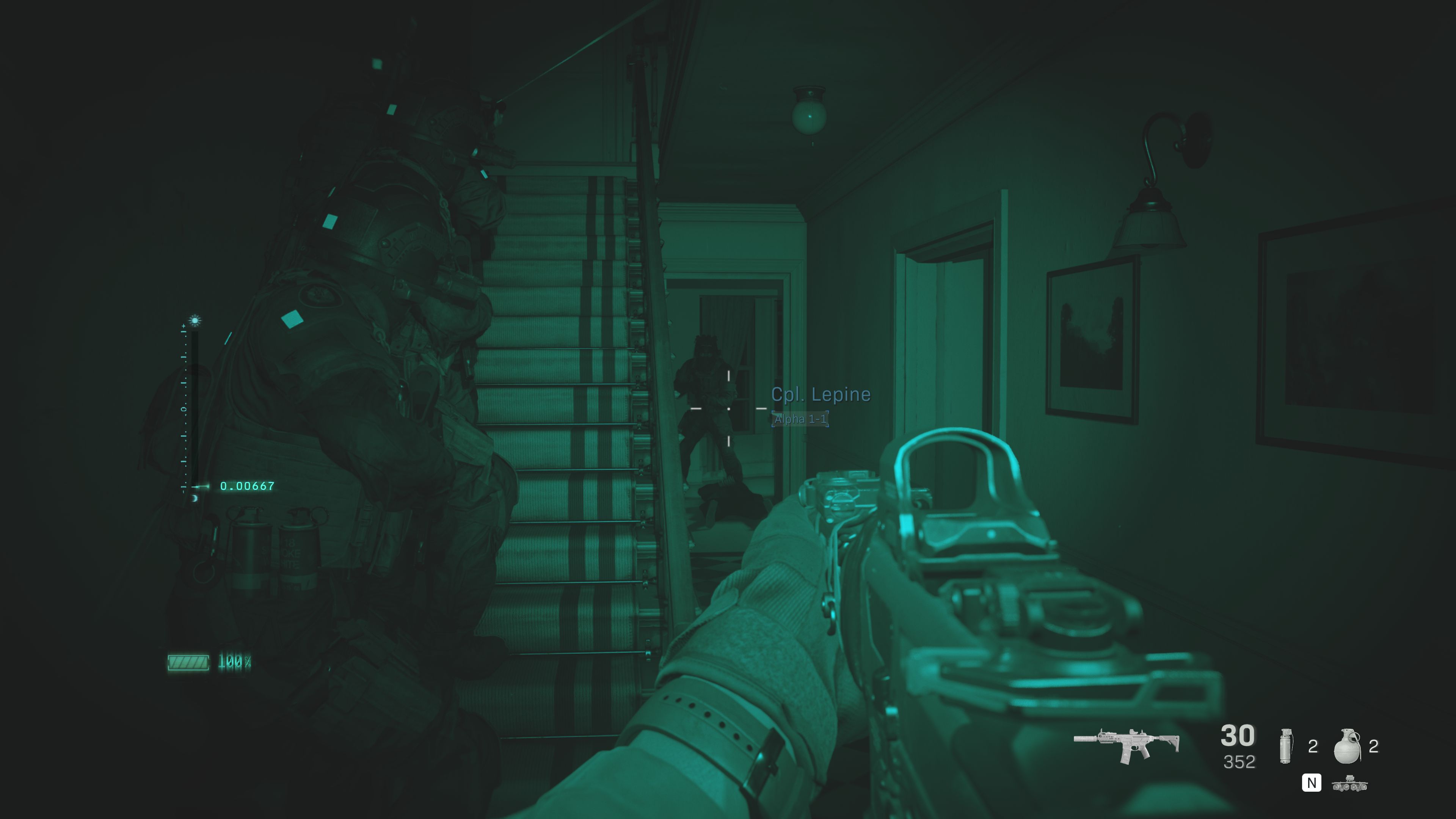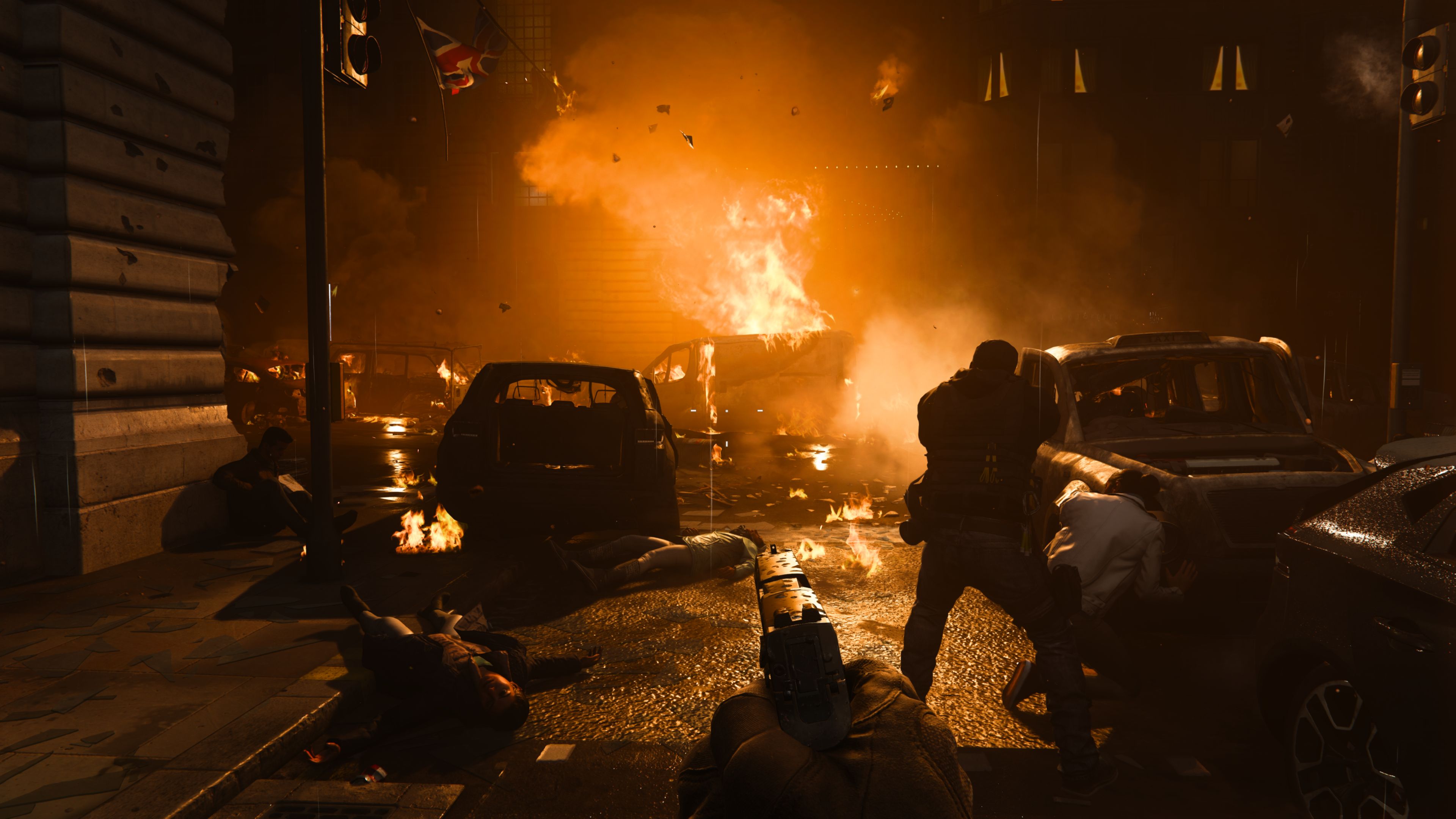
Call of Duty: Modern Warfare is committed to providing the most authentic combat experience in the series yet. As part of this, developer Infinity Ward has completely overhauled its approached to graphics rendering for this reimagining of its classic title. Over the past five years, the studio has built a new engine specifically for Modern Warfare, one that utilises state-of-the-art rendering technology to create real-looking materials, character animations, and lighting.
Almost every object and environmental detail you see in Call of Duty: Modern Warfare has a real-life basis. A crucial element of Infinity’s Ward new physically-based rendering system is a heavy emphasis on photogrammetry. This involves 3D-scanning objects directly – rocks, chairs, bricks, weapons – in order to replicate their specific surface properties, such their roughness and reflectivity. This is combined with taking lighting samples from real-world locations to create skyboxes and global lighting that accurately mimic light-levels and conditions in that area of the world at that specific time of day.

Indeed, lighting is a crucial component of Infinity Ward’s approach to realistic visual rendering. Modern Warfare’s lighting engine is entirely based around volumetric lights – a 3D simulation of how light scatters across an environment. Every light source in Modern Warfare is volumetric, letting the developers tailor specifically the atmospheric conditions that affect the global lighting of a specific level or map. For example, it enables them to replicate the humid conditions of early morning, or the dust kicked into the atmosphere by a combined-arms Marine Assault.
Modern Warfare does not simply reflect the conditions created by visual light, it introduces a concept known as spectral rendering. This is a new technology whereby Modern Warfare simulates the look of the environment in both infrared and thermal radiation. This is because many of Call of Duty’s levels are viewed by the player in multiple light spectrums, with the player making use of Night-Vision goggles and thermal imaging cameras in specific missions. Infinity Ward have ensured the game looks just as believable regardless of how your equipment alters your perspective, so that putting on your night-vision goggles enhances your sense of immersion as well as your ability to see in the dark.

On PC, there is a third strand to Infinity Ward’s commitment to realistic lighting effects, the adoption of ray-tracing technology. Infinity Ward has been working closely with Nvidia to ensure Modern Warfare takes full advantage of Nvidia’s RTX cards. Ray-tracing enables a whole suite of new graphical features, including point-light shadows, which cast accurate shadows in all directions for small point lights such as lightbulbs, and ray-traced spot-light shadows, which do the same for spot lights such as torches and headlamps. Ray-tracing also affects how light reflects off certain surfaces, providing realistic reflections off surfaces like glass and puddles on the ground.
It isn’t only the campaign that is able to advantage of this new tech. For Modern Warfare’s multiplayer, Infinity Ward wanted to create maps and game modes that are larger than anything you’ve seen in previous titles. To facilitate this, Infinity Ward has developed a new tile-based streaming system that splits the maps into an invisible grid of tiles relative to the player’s position, before streaming in level data according to the direction the players is moving and facing. This is crucial for some of Modern Warfare’s new game modes, such as Ground War, a gigantic 64 player capture-and-hold battle, and the co-operative spec-ops mode, which sees up to four players completing objectives in large, open-ended environments.

All of this forms a general effort to create scenes and environments that are as convincing to the eye as possible. Modern Warfare’s geometric detail is over five times greater than the most recent Call of Duty games. However, Infinity Ward is also mindful of the importance of good performance. Call of Duty’s fast-paced action and snappy multiplayer means a smooth and consistent experience is vital, especially considering that Modern Warfare is the first entry in the series to support cross-play across PC, PS4 and Xbox One.
Hence, Infinity Ward has targeted 60 FPS as a minimum baseline for all platforms, including on RTX-enhanced PCs, ensuring your Modern Warfare experience doesn’t simply look incredible, but feels slick and responsive as well. In this way, Modern Warfare represents the biggest technological leap for the series in years, and one of the most technologically advanced games of 2019.
Sign up to the GamesRadar+ Newsletter
Weekly digests, tales from the communities you love, and more


